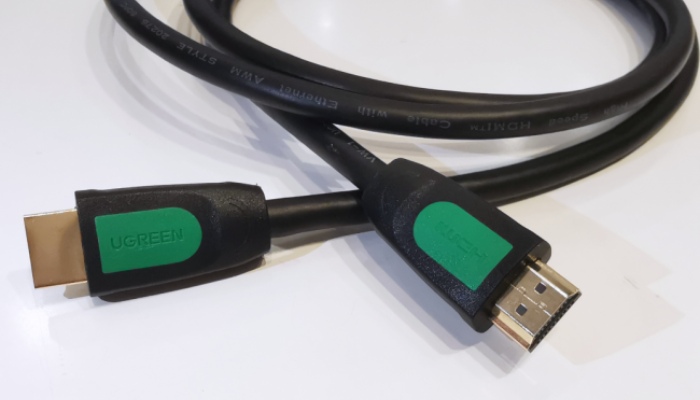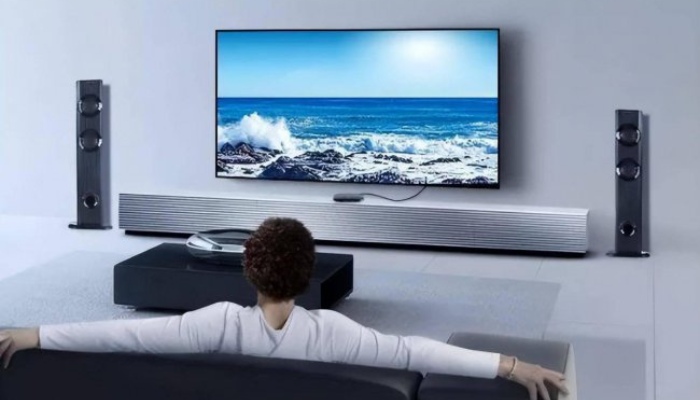The HDMI cable has been widely used in our daily lives, just like chargers, surrounding all aspects of us. The HDMI cable has an inverted trapezoidal shape and is relatively flat. Commonly used in devices such as LCD TVs, set-top boxes, laptops and connections for home theater.
It can simultaneously transmit audio and video signals without the need for digital/analog or analog/digital conversion before signal transmission. HDMI cable has evolved from version 1.0 to version 2.1, and currently 1.4/2.0/2.1 version is the most commonly used. Today, let’s take a look at various types of HDMI cable and their technical features.
HDMI cable version 1.0
It is more advanced and convenient than the popular DVI interface at that time. At the same time, it is also more suitable for the use of audiovisual equipment.
HDMI cable version 1.0 supports video streaming from DVD to Blu ray format and has CEC functionality. When applying, a common connection can be formed between all connected devices, making it more convenient to control the entire device group. The comparison of cable specifications during the same period is very strong.
There are three versions after version 1.0, namely version 1.1/1.2/1.3. HDMI cable version 1.1 was released on May 20, 2004, with added support for DVD-Audio. The HDMI cable 1.2 version was launched in August 2005, adding support for 1-bit audio and SACD audio streaming, with a maximum of 8 channels.
The HDMI cable 1.3 version was launched in June 2006, making significant progress by increasing the bandwidth frequency to 340MHz, enabling LCD TVs to achieve 10.2Gbps data transmission. Supports technologies such as Deep Color, Dolby TrueHD, DTS-HD main audio, and can be decoded by Blu ray machines through HDMI streaming audio to supported amplifiers.
HDMI cable version 1.4
During the development of HDMI cable, version 1.4 was the most popular version, released in May 2009. HDMI version 1.4 can already support 4K, but due to bandwidth constraints of 10.2Gbps, it can only reach a maximum of 3840 × 2160 resolution and 30FPS frame rate. Later, due to the beginning of the 3D craze, HDMI 1.4 version supported 3D images of 1080/24p and 720/50p/60p. In terms of audio, ARC function has also been added, which allows TV audio to be transmitted back to the amplifier through HDMI and then output. After the HDMI 1.4 version, there are also HDMI 1.4a and 1.4b, which have been improved due to the 3D craze caused by Avatar.
HDMI cable version 2.0
HDMI 2.0 has expanded its bandwidth to 18Gbps and can support 4K/60p videos. The playback is vivid and smooth, with ideal video effects and no lag, making it softer for the human eye. At the same time, it is compatible with Rec.2020 color depth, which can give a sense of color hierarchy and make the image more delicate and rich. And it supports plug and play and hot swapping. At the same time, it also supports a resolution of 3840 * 2160 and a maximum frame rate of 60Hz. At the same time, there is a significant increase in audio, which can support up to 32 channels of lossless audio and a maximum sampling rate of 1536 khz. It is one of the commonly used versions we have now. The subsequent HDMI 2.0a and 2.0b only added support for HDR format transmission on the basis of HDMI 2.0, enhancing image quality, and there was no significant difference in other aspects.
HDMI cable version 2.1
HDMI version 2.1 is currently one of the most popular versions and was launched in January 2017. HDMI 2.1 significantly increases transmission bandwidth from 18Gbps to 48Gbps, supporting up to 7680 × 4320/60Hz (8K/60p) image, or 4K/120Hz higher frame rate image. HDMI 2.1 supports dynamic HDR, which is not available in version 2.0. Dynamic HDR can further enhance the performance of the same light and dark levels in contrast to each frame’s light and dark distribution, and display a wider color gamut.
In terms of sound effects, HDMI 2.1 supports the new eARC (Audio Return Channel) technology, which can return object based sound effects such as Dolby Atmos compared to existing ARC. At the same time, it also supports new technologies such as variable Refresh rate, fast media switching, fast frame transmission, and automatic low delay mode.
Finally, there is the latest released HDMI version 2.1a, which is an upgraded version launched in January 2022. Only the SBTM function has been added, which can reduce the color adjustment pressure of the display and enhance the HDR display effect.
At present, the equipment on the market adopts the latest technology, and in order to enjoy these functions, it requires wires that can be supported. HDMI cable 1.4, 2.0, and 2.1 are currently the most commonly used, and we recommend purchasing HDMI cable 2.0 and 2.1 versions. These two versions support more features and provide a better experience.
PowerTel & his associated factories can provide you a full range of HDMI cable in different versions, together with differenet types of adapter for various connections.

